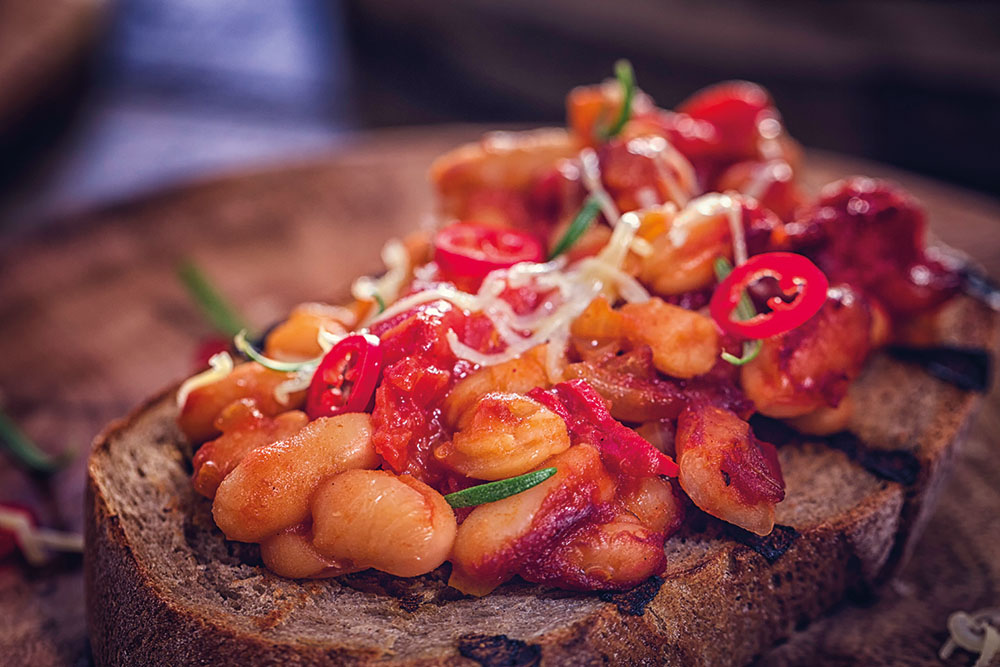A trip to France makes Alex Rushmer reflect on the universally popular combination of bread and beans, in all its delicious forms
Of all the delicious meals I ate while away in rural France, the single tastiest element was a simple dish of local beans cooked with onion, garlic and olive oil, and freshened at the last minute with plenty of parsley. The bean was a local variety, grown with great pride close to Nantes, called a mogette. It has the appearance of a large haricot, but is blessed with a rich creaminess normally achieved solely by the addition of much dairy-based fat.
The barbecued merguez was perfectly acceptable and the salad, pepped with a sharp vinaigrette, was also good, but it was the beans I went back to multiple times, scooping up obscene mouthfuls with a torn baguette laden with salty, pale-yellow butter. That marriage – of bread and bean – wasn’t something I’d given much thought to previously, but as the sun set, through a fuzzy haze of muscadet wine, I realised how much I’ve relied on that happy combination for most of my life.
It began, as I’m sure it did for many, with Heinz and Warburtons. Slices of pappy white bread, gently blackened by the toaster, pooling with melted butter and topped with a whole tin of lurid baked beans, was a regular Saturday lunch (or late breakfast when my weekends began to involve Friday night trips to the pub). Obviously, I still return to beans on toast on occasion: no amount of artisanal French beans will ever wrestle that particular duo from my affections. But since then, my culinary horizons have been broadened and I’ve experienced a significant number of dishes combining stodgy bread and pulses that have kept much of the world nourished and full over several centuries.
The tastiest element was a simple dish of local beans
At university, I graduated from beans on toast to hummus. The carbohydrate element with which I conveyed mashed chickpeas to my mouth was irrelevant, and could come in any one of a number of forms – from 50p supermarket baguette to boldly adventurous home-made flatbreads (plain flour + water + salt + dry, scorching hot pan = passable pitta bread), and during exam term provided at least half my daily calorie intake.
Since then, almost every combination of pulse carried by a wheat-based vehicle has passed my lips, filled my belly and nourished my soul. From breakfasts of ful (dried broad beans cooked with fiery spices) with fluffy rolls in Ethiopia and lunches of falafel in charred flatbreads in Toronto, to mid-afternoon bowls of harira soaked up with cracked wheat bread in Marrakech and dinners of dal and chapatis in Rajasthan, each and every one has left me happy and replete – and continues to do so from my own kitchen several years down the line.
What makes this particular combination so universally appealing is because it fills four criteria that are crucial for much of the world: the belly can be filled with something delicious and nourishing for very little cost. Pulses are a great source of protein and vitamins and, what’s more, once dried they have an almost indefinite shelf life. Of course, this adds the slight inconvenience of soaking, but even this can be avoided by using a pressure cooker, in which it is possible to transform a dried chickpea into something soft enough to blend into hummus in just under an hour. Now that’s definitely worth raising your pulse for.

